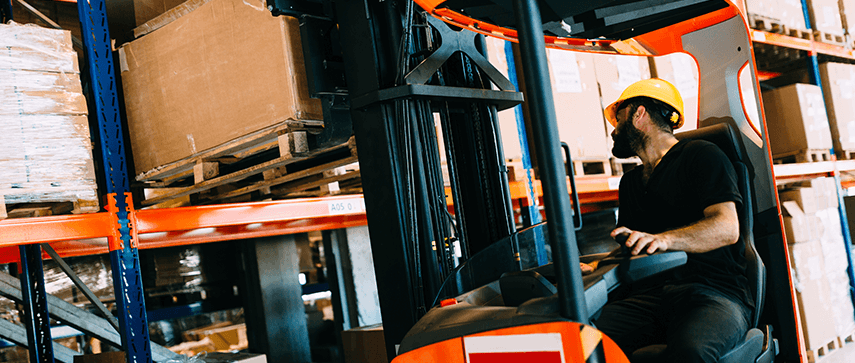Over the past couple of years, we have witnessed some exquisite developments in the transportation and logistics industry, including truck platooning, autonomous driving, electric trucks, and other smart transportation solutions. But until lately, the industry struggled to keep up with the changes in supply and demand. Elastic logistics overcomes this hurdle; it provides flexibility to increase or decrease the capability to accommodate the fluctuating demands in production, warehousing, and shipping. In this article, we will get into the details, along with the importance, future, and growth in elastic logistics.
Importance Of Elastic Logistics
When it comes to logistics, lean business practices do not work. Although they are meant to be flexible, they are not adjusted for logistics, primarily as per the variable demand in modern eCommerce. Lean business models might work well for manufacturing (first-mile) and the shelf stock (last-mile) industries; they are not tailored for logistics (middle-mile).
Elastic logistics tends to fill these gaps along with the middle-miles and warehousing. Practically, the importance of elastic logistics in the supply chain is still ambiguous; however, it is developed to adjust variables like sailing schedules, container usage, and carrier space, to make the supply chain more effective and function with a minimal amount of waste.
Some of the problems elastic logistics overcomes include:
- Over-manufacturing
- Overstocking
- Half-full vessels
- Price volatility
The Use of Technology
The popularity of elastic logistics is because its benefits are solely realized through technical solutions. For instance, data analytics of freight traffic have become more informative. Moreover, volumes can be predicted easily in a short time. Supply chain management software solutions offer enhanced, real-time visibility to logistics companies of their consumer needs.
Several freight marketplaces have adopted elastic logistics and made shipment execution and procurement easier than ever. Components like sensors are helping vessels emphasize on storage and stacking protocols, thereby providing them with improved control by achieving optimal capacity. Technology has enabled manufacturers, delivery trucks, and vessels to scale up and down as per both the real-time and predictive demand.
Warehouses are even linking automation with elasticity, thus, leading to automated warehouse fulfillment, which works wholly to meet demand. Thus, elastic logistics is the new trend, which requires technological solutions and automation to become more efficient along with freight professionals.
Benefits of Elastic Logistics
The trends in supply and demand are becoming difficult to predict and are significantly affecting the logistics industry. The supply-demand co-action has always been the core of the logistics industry. However, the rise of the digital age and eCommerce has inflicted a shift, with the weight being more towards the consumers.
In a customer-centric market, companies need to respond as per the demands of the consumers. Since consumer requirements can be unpredictable, companies are looking for a solution in the form of elastic logistics to cope with these ever-changing demand rates.
So, how does elastic logistics benefit logistics companies?
1 Automation
The primary advantage comes in the form of automation, which turns out to be the most logical solution for a company that wants to be more flexible in its scaling abilities. Elastic logistics reduces human error and offers a more efficient packaging process in the production line, which directly enables the company to adjust according to the changes in demand.
2 Third-party partnering
Another advantage of elastic logistics is third-party partnering, which reduces the risks of investing more in internal operations. Companies can now lease extra warehouses both locally and in distant locations to adjust to short-term demand fluctuations. Besides, using external fleets in the form of third-party delivery options like courier services turns out to be an effective way to stay ahead of unexpected rise or decline in consumer demand. Thus, elastic logistics provide robust scaling capacities.
3 Efficiency, visibility, and control
Elastic logistics allows you to manage all the incoming and outgoing deliveries through one dashboard, which directly adds to your productivity as you don't need to tinker around multiple platforms. This further simplifies control of unexpected costs and delivery operations irrespective of the method being used for shipping.
Elastic logistics also offers a better tracking system, which makes it easier for you to track all the shipments. It streamlines warehouse planning for incoming freight and enables prompt responses to order status requests.
4 Enhanced user experience
All of this improves your ability to rapidly address issues irrespective of how you are transporting the freight shipment. Thus, it results in improved customer experience and customer satisfaction, which leads to increased customer retention.
Are There Any Downsides?
Although the benefits of elastic logistics overpower the drawbacks, there are some potential downsides you should consider.
You will need to spend time and money at the beginning to fully enjoy the benefits of a supply chain with enhanced flexibility. In some instances, you might need to make significant changes to your workforce as well. There will be a requirement for investment and training, which could certainly slow down your operations for some time.
Moreover, the adoption of any new technology takes time, and it can be overwhelming and anxious to see machines replacing humans. Also, you might need to hire employees to work on emerging technology like robotics and AI.
Upcoming Trends In Elastic Supply Chains
Elastic logistics has already taken over the logistics and warehousing industries, but we are yet to see its full potential. Here is a look-in to the future of elastic logistics.
Increased Adoption Of Elastic Logistics
As discussed before, most logistic companies are struggling to meet the fluctuating demand from consumers. An increase or decrease in logistics demand can be due to several reasons, ranging from seasonal spikes to event-based demand hikes. Also, different companies rely on various sources to overcome this challenge of ever-changing demand. Some may depend on 3PL's, whereas, logistics giants like DHL, UPS, and FedEx partner with local vendors to meet the surged requirements.
In the upcoming years, we can see the growth in elastic logistics as more companies will embrace this concept to make their operations more agile and flexible. Aligning the dependence on the latest technologies makes a company capable of responding to fluctuations in demand more effectively, along with reducing internal operating costs, increasing efficiency, retaining existing customers, and winning new customers.
Role Of Elasticity In Warehousing
Elasticity is not confined to logistics but has made its way to warehousing as well. As the demand increases or decreases, the requirement for warehousing size also changes. Thus, there is no one size that fits all the warehousing requirements, which is leading to increased adoption of the elastic warehouse model. More companies are embracing this concept to manage demand accurately with respect to time and location. There are several elastic strategies used by warehousing businesses to keep up with the surging and plunging demands.
- One of the most commonly used methods is Elastic Overheads, in which you can make your existing technology and people work with more efficiency. This tactic, however, is not scalable and productive in the long run.
- Another way to increase warehouse elasticity is by Elastic Outsourcing, in which you can outsource your warehousing and distribution requirements when the demand arises. This technique is also not feasible in the long run, as you will need to rely on external service providers. You can also pick the elastic technology strategy, which involves an entire technological implementation.
- However, this method can be costly for the newly formed logistics companies. Here is where the concept of Elastic Blend comes into play, which is a mix of all the three strategies discussed above. It helps you get superior control over your processes by spending relatively less money.

Supply Chain as a Service (SCaaS)
Supply Chain as a Service (SCaaS) is another emerging trend to look out for. SCaaS features a flexible cost structure, which allows companies to gain the benefits of collaborating with the best supply chain talent, along with maintaining long-lasting, healthy industry relationships, and utilizing best in class technology without any full-time commitments.
Effect Of Elastic Logistics On Existing Workforce
Staff optimization is not necessarily an intermediate of elastic logistics, but an allocation solution, which aims at the adequate allotment of resources. Therefore, the concept of elasticity and its integration with technology is not meant to reduce staff. In fact, in elastic logistics, manpower still remains to be a vital resource.
Elastic logistics requires freight forwarding workers to work. It provides accurate data about scalability and adjustments, but it still needs freight professionals to analyze the data and use it to improve the core operations.
All in all, a solution powered by technology might seem daunting, but it is what acts as the tool of the future.

How To Make Your Logistics Operations More Elastic?
An excellent way to make your operations more elastic is by using a Transport Management System (TMS). Powering your warehouse with additional automation can come in handy to streamline order packaging without increasing staffing.
If there arises a need for additional warehousing locally or regionally, third-party options are the best pick. You might get tempted to increase your fleet size when you witness a sudden rise in demand, but you may end up experiencing a decreased demand later, which will make the company-owned fleet less applicable.
Therefore, third-party partnerships are an excellent solution. And, a few years down the line, technological advancements will further improve the elastic logistics. Trends like artificial intelligence, advanced analytics, machine learning, and IoT will come into play as logistics companies are already adopting some of them.
Wrapping Up,
The growth in elastic logistics raises the need for businesses to become more agile in their operations and processes. And, there is no doubt the introduction of technologies like AI, IoT, analytics, and drones will impact the future of logistics as well. The increase in these innovations has made it essential for logistics companies to become more flexible and inevitable.
With today's rising unpredictable demand fluctuations, along with the increasing need to maintain excellent user experiences, adopting elastic logistics has become the need of the hour. Although the implementation of elastic logistics might seem daunting, with proper planning, it can turn out to be a revolutionary strategy for your business.





 May 20, 2020
May 20, 2020


